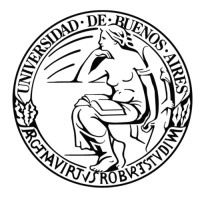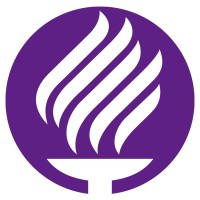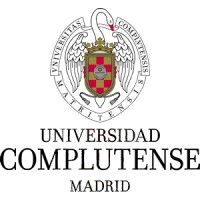
Universidad Nacional de Colombia Company Cyber Security Posture
unal.edu.coPágina oficial. La Universidad Nacional de Colombia fue creada en 1867 por medio de la expedición de la Ley 66 del Congreso de la República, como un ente universitario con plena autonomía vinculado al Ministerio de Educación Nacional, con régimen especial, de carácter público y perteneciente al Estado. La Universidad Nacional de Colombia cumple funciones orientadas a promover, en nombre del Estado y bajo su fomento, el desarrollo de la educación superior hasta sus más altos niveles; favorecer el acceso a ella y estimular la docencia, la investigación, las ciencias, la creación artística y la extensión, para alcanzar la excelencia. Por su carácter nacional y para cumplir la misión de contribuir a la identidad de la nación en su diversidad, la Institución está constituida por nueve sedes en el territorio nacional: Amazonia, Caribe, Bogotá, Manizales, Medellín, Orinoquia, Palmira, Tumaco y de La Paz.
UNDC Company Details
universidadnacionaldecolombia
13771 employees
270387
none
Enseñanza superior
unal.edu.co
62
UNI_5010792
In-progress
Between 500 and 600
This score is AI-generated and less favored by cyber insurers, who prefer the TPRM score.
 UNDC Global Score
UNDC Global Score.png)

Universidad Nacional de Colombia Company Scoring based on AI Models
| Model Name | Date | Description | Current Score Difference | Score |
|---|---|---|---|---|
| AVERAGE-Industry | 03-12-2025 | This score represents the average cybersecurity rating of companies already scanned within the same industry. It provides a benchmark to compare an individual company's security posture against its industry peers. | N/A | Between 500 and 600 |
Universidad Nacional de Colombia Company Cyber Security News & History
| Entity | Type | Severity | Impact | Seen | Url ID | Details | View |
|---|
Universidad Nacional de Colombia Company Subsidiaries

Página oficial. La Universidad Nacional de Colombia fue creada en 1867 por medio de la expedición de la Ley 66 del Congreso de la República, como un ente universitario con plena autonomía vinculado al Ministerio de Educación Nacional, con régimen especial, de carácter público y perteneciente al Estado. La Universidad Nacional de Colombia cumple funciones orientadas a promover, en nombre del Estado y bajo su fomento, el desarrollo de la educación superior hasta sus más altos niveles; favorecer el acceso a ella y estimular la docencia, la investigación, las ciencias, la creación artística y la extensión, para alcanzar la excelencia. Por su carácter nacional y para cumplir la misión de contribuir a la identidad de la nación en su diversidad, la Institución está constituida por nueve sedes en el territorio nacional: Amazonia, Caribe, Bogotá, Manizales, Medellín, Orinoquia, Palmira, Tumaco y de La Paz.
Access Data Using Our API

Get company history
.png)
UNDC Cyber Security News
A path forward for Colombia’s 2016 peace accord and lasting security
Halfway through period allotted for the 2016 peace accord's implementation, Colombia faces slow progress amid rising organized crime.
ICE and International Partners Launch Operation Renewed Hope III to Rescue Online Child Exploitation Victims
The ICE Homeland Security Investigations-led operation resulted in the discovery and positive identification of 36 victims and more than 380 ...
The other big US-Colombia challenge
A bigger national security challenge looms for the bilateral relationship between Washington and Bogotá: what to do about Colombia's ongoing drug war.
Colombia digs security leave nothing to chance
Three-year stadium bans were handed out to the fans involved in the hooliganism during the December 14th fixture between the top-flights.
EL Centro - About
El Centro is SWJ's focus on small wars in Latin America. The elephant in the hemispheric room is clearly the epidemic criminal, cartel and gang threat, ...
Nutrition, Technology, and Sustainability: The Scientific Approach to Tackle Food Insecurity
A team of researchers is developing innovative strategies to improve food access, reduce waste, and optimize preservation.
Data Protection in Europe and Beyond – A Short Comparative Analysis
In May 2018 the European Union (EU) implemented the General Data Protection Regulation (GDPR), a legal framework that seeks to safeguard individual rights.
Closing the cybersecurity skills gap – Microsoft expands efforts to 23 countries
By 2025, there will be 3.5 million cybersecurity jobs open globally, representing a 350% increase over an eight-year period, according to ...
Secretariat for Multidimensional Security (SMS)
The OAS Secretariat for Multidimensional Security (SMS) promotes and coordinates cooperation among Member States, the Inter-American System, and other ...

UNDC Similar Companies

Universidad de Buenos Aires
La Universidad de Buenos Aires (UBA) es la universidad pública más importante de Argentina. Es reconocida por los principales rankings internacionales como la mejor universidad de Iberoamérica. Actualmente, ocupa el puesto Nº 67 en el Ranking QS global. Su modelo de gratuidad, excelencia académica

Servicio Nacional de Aprendizaje (SENA)
El Servicio Nacional de Aprendizaje, SENA, es un establecimiento público del orden nacional con personería jurídica, patrimonio propio e independiente y autonomía administrativa. Adscrito al Ministerio del Trabajo de Colombia, ofrece formación gratuita a millones de colombianos que se benefician co

Universidad de Chile
Desde 1842, es la principal y más antigua institución de educación superior del Estado de Chile. De carácter nacional y público, está dedicada a la enseñanza superior, investigación, creación y extensión en las ciencias, las humanidades y las artes a través de sus funciones de docencia, creación

Tecnológico de Monterrey
Estamos comprometidos en transformar la vida de los demás y dar soluciones significativas para el resto del mundo. En el Tecnológico de Monterrey, nos enfocamos en generar un impacto positivo en la sociedad y ser el mejor lugar para desarrollarte profesional y personalmente cultivando nuevas formas

Tecnológico de Monterrey
Estamos comprometidos en transformar la vida de los demás y dar soluciones significativas para el resto del mundo. En el Tecnológico de Monterrey, nos enfocamos en generar un impacto positivo en la sociedad y ser el mejor lugar para desarrollarte profesional y personalmente cultivando nuevas formas

Universidad Complutense de Madrid
La UCM es la mayor Universidad presencial de España y un centro de referencia para el continente latinoamericano. Oferta para el curso 2023-24: 94 grados, 165 másteres, 300 títulos propios, 57 programas de doctorado y 190 cursos de formación continua. La Complutense es una universidad pública que a

Frequently Asked Questions (FAQ) on Cybersecurity Incidents
UNDC CyberSecurity History Information
Total Incidents: According to Rankiteo, UNDC has faced 0 incidents in the past.
Incident Types: As of the current reporting period, UNDC has not encountered any cybersecurity incidents.
Total Financial Loss: The total financial loss from these incidents is estimated to be {total_financial_loss}.
Cybersecurity Posture: The company's overall cybersecurity posture is described as Página oficial. La Universidad Nacional de Colombia fue creada en 1867 por medio de la expedición de la Ley 66 del Congreso de la República, como un ente universitario con plena autonomía vinculado al Ministerio de Educación Nacional, con régimen especial, de carácter público y perteneciente al Estado. La Universidad Nacional de Colombia cumple funciones orientadas a promover, en nombre del Estado y bajo su fomento, el desarrollo de la educación superior hasta sus más altos niveles; favorecer el acceso a ella y estimular la docencia, la investigación, las ciencias, la creación artística y la extensión, para alcanzar la excelencia. Por su carácter nacional y para cumplir la misión de contribuir a la identidad de la nación en su diversidad, la Institución está constituida por nueve sedes en el territorio nacional: Amazonia, Caribe, Bogotá, Manizales, Medellín, Orinoquia, Palmira, Tumaco y de La Paz..
Detection and Response: The company detects and responds to cybersecurity incidents through {description_of_detection_and_response_process}.
Incident Details
Incident 1: Ransomware Attack
Title: {Incident_Title}
Description: {Brief_description_of_the_incident}
Date Detected: {Detection_Date}
Date Publicly Disclosed: {Disclosure_Date}
Date Resolved: {Resolution_Date}
Type: {Type_of_Attack}
Attack Vector: {Attack_Vector}
Vulnerability Exploited: {Vulnerability}
Threat Actor: {Threat_Actor}
Motivation: {Motivation}
Incident 2: Data Breach
Title: {Incident_Title}
Description: {Brief_description_of_the_incident}
Date Detected: {Detection_Date}
Date Publicly Disclosed: {Disclosure_Date}
Date Resolved: {Resolution_Date}
Type: {Type_of_Attack}
Attack Vector: {Attack_Vector}
Vulnerability Exploited: {Vulnerability}
Threat Actor: {Threat_Actor}
Motivation: {Motivation}
Common Attack Types: As of now, the company has not encountered any reported incidents involving common cyberattacks.
Identification of Attack Vectors: The company identifies the attack vectors used in incidents through {description_of_identification_process}.
Impact of the Incidents
Incident 1: Ransomware Attack
Financial Loss: {Financial_Loss}
Data Compromised: {Data_Compromised}
Systems Affected: {Systems_Affected}
Downtime: {Downtime}
Operational Impact: {Operational_Impact}
Conversion Rate Impact: {Conversion_Rate_Impact}
Revenue Loss: {Revenue_Loss}
Customer Complaints: {Customer_Complaints}
Brand Reputation Impact: {Brand_Reputation_Impact}
Legal Liabilities: {Legal_Liabilities}
Identity Theft Risk: {Identity_Theft_Risk}
Payment Information Risk: {Payment_Information_Risk}
Incident 2: Data Breach
Financial Loss: {Financial_Loss}
Data Compromised: {Data_Compromised}
Systems Affected: {Systems_Affected}
Downtime: {Downtime}
Operational Impact: {Operational_Impact}
Conversion Rate Impact: {Conversion_Rate_Impact}
Revenue Loss: {Revenue_Loss}
Customer Complaints: {Customer_Complaints}
Brand Reputation Impact: {Brand_Reputation_Impact}
Legal Liabilities: {Legal_Liabilities}
Identity Theft Risk: {Identity_Theft_Risk}
Payment Information Risk: {Payment_Information_Risk}
Average Financial Loss: The average financial loss per incident is {average_financial_loss}.
Commonly Compromised Data Types: The types of data most commonly compromised in incidents are {list_of_commonly_compromised_data_types}.
Incident 1: Ransomware Attack
Entity Name: {Entity_Name}
Entity Type: {Entity_Type}
Industry: {Industry}
Location: {Location}
Size: {Size}
Customers Affected: {Customers_Affected}
Incident 2: Data Breach
Entity Name: {Entity_Name}
Entity Type: {Entity_Type}
Industry: {Industry}
Location: {Location}
Size: {Size}
Customers Affected: {Customers_Affected}
Response to the Incidents
Incident 1: Ransomware Attack
Incident Response Plan Activated: {Yes/No}
Third Party Assistance: {Yes/No}
Law Enforcement Notified: {Yes/No}
Containment Measures: {Containment_Measures}
Remediation Measures: {Remediation_Measures}
Recovery Measures: {Recovery_Measures}
Communication Strategy: {Communication_Strategy}
Adaptive Behavioral WAF: {Adaptive_Behavioral_WAF}
On-Demand Scrubbing Services: {On_Demand_Scrubbing_Services}
Network Segmentation: {Network_Segmentation}
Enhanced Monitoring: {Enhanced_Monitoring}
Incident 2: Data Breach
Incident Response Plan Activated: {Yes/No}
Third Party Assistance: {Yes/No}
Law Enforcement Notified: {Yes/No}
Containment Measures: {Containment_Measures}
Remediation Measures: {Remediation_Measures}
Recovery Measures: {Recovery_Measures}
Communication Strategy: {Communication_Strategy}
Adaptive Behavioral WAF: {Adaptive_Behavioral_WAF}
On-Demand Scrubbing Services: {On_Demand_Scrubbing_Services}
Network Segmentation: {Network_Segmentation}
Enhanced Monitoring: {Enhanced_Monitoring}
Incident Response Plan: The company's incident response plan is described as {description_of_incident_response_plan}.
Third-Party Assistance: The company involves third-party assistance in incident response through {description_of_third_party_involvement}.
Data Breach Information
Incident 2: Data Breach
Type of Data Compromised: {Type_of_Data}
Number of Records Exposed: {Number_of_Records}
Sensitivity of Data: {Sensitivity_of_Data}
Data Exfiltration: {Yes/No}
Data Encryption: {Yes/No}
File Types Exposed: {File_Types}
Personally Identifiable Information: {Yes/No}
Prevention of Data Exfiltration: The company takes the following measures to prevent data exfiltration: {description_of_prevention_measures}.
Handling of PII Incidents: The company handles incidents involving personally identifiable information (PII) through {description_of_handling_process}.
Ransomware Information
Incident 1: Ransomware Attack
Ransom Demanded: {Ransom_Amount}
Ransom Paid: {Ransom_Paid}
Ransomware Strain: {Ransomware_Strain}
Data Encryption: {Yes/No}
Data Exfiltration: {Yes/No}
Ransom Payment Policy: The company's policy on paying ransoms in ransomware incidents is described as {description_of_ransom_payment_policy}.
Data Recovery from Ransomware: The company recovers data encrypted by ransomware through {description_of_data_recovery_process}.
Regulatory Compliance
Incident 1: Ransomware Attack
Regulations Violated: {Regulations_Violated}
Fines Imposed: {Fines_Imposed}
Legal Actions: {Legal_Actions}
Regulatory Notifications: {Regulatory_Notifications}
Incident 2: Data Breach
Regulations Violated: {Regulations_Violated}
Fines Imposed: {Fines_Imposed}
Legal Actions: {Legal_Actions}
Regulatory Notifications: {Regulatory_Notifications}
Regulatory Frameworks: The company complies with the following regulatory frameworks regarding cybersecurity: {list_of_regulatory_frameworks}.
Ensuring Regulatory Compliance: The company ensures compliance with regulatory requirements through {description_of_compliance_measures}.
Lessons Learned and Recommendations
Incident 1: Ransomware Attack
Lessons Learned: {Lessons_Learned}
Incident 2: Data Breach
Lessons Learned: {Lessons_Learned}
Incident 1: Ransomware Attack
Recommendations: {Recommendations}
Incident 2: Data Breach
Recommendations: {Recommendations}
Key Lessons Learned: The key lessons learned from past incidents are {list_of_key_lessons_learned}.
Implemented Recommendations: The company has implemented the following recommendations to improve cybersecurity: {list_of_implemented_recommendations}.
References
Additional Resources: Stakeholders can find additional resources on cybersecurity best practices at {list_of_additional_resources}.
Investigation Status
Incident 1: Ransomware Attack
Investigation Status: {Investigation_Status}
Incident 2: Data Breach
Investigation Status: {Investigation_Status}
Communication of Investigation Status: The company communicates the status of incident investigations to stakeholders through {description_of_communication_process}.
Stakeholder and Customer Advisories
Incident 1: Ransomware Attack
Stakeholder Advisories: {Stakeholder_Advisories}
Customer Advisories: {Customer_Advisories}
Incident 2: Data Breach
Stakeholder Advisories: {Stakeholder_Advisories}
Customer Advisories: {Customer_Advisories}
Advisories Provided: The company provides the following advisories to stakeholders and customers following an incident: {description_of_advisories_provided}.
Initial Access Broker
Incident 1: Ransomware Attack
Entry Point: {Entry_Point}
Reconnaissance Period: {Reconnaissance_Period}
Backdoors Established: {Backdoors_Established}
High Value Targets: {High_Value_Targets}
Data Sold on Dark Web: {Yes/No}
Incident 2: Data Breach
Entry Point: {Entry_Point}
Reconnaissance Period: {Reconnaissance_Period}
Backdoors Established: {Backdoors_Established}
High Value Targets: {High_Value_Targets}
Data Sold on Dark Web: {Yes/No}
Monitoring and Mitigation of Initial Access Brokers: The company monitors and mitigates the activities of initial access brokers through {description_of_monitoring_and_mitigation_measures}.
Post-Incident Analysis
Incident 1: Ransomware Attack
Root Causes: {Root_Causes}
Corrective Actions: {Corrective_Actions}
Incident 2: Data Breach
Root Causes: {Root_Causes}
Corrective Actions: {Corrective_Actions}
Post-Incident Analysis Process: The company's process for conducting post-incident analysis is described as {description_of_post_incident_analysis_process}.
Corrective Actions Taken: The company has taken the following corrective actions based on post-incident analysis: {list_of_corrective_actions_taken}.
Additional Questions
General Information
Ransom Payment History: The company has {paid/not_paid} ransoms in the past.
Last Ransom Demanded: The amount of the last ransom demanded was {last_ransom_amount}.
Last Attacking Group: The attacking group in the last incident was {last_attacking_group}.
Incident Details
Most Recent Incident Detected: The most recent incident detected was on {most_recent_incident_detected_date}.
Most Recent Incident Publicly Disclosed: The most recent incident publicly disclosed was on {most_recent_incident_publicly_disclosed_date}.
Most Recent Incident Resolved: The most recent incident resolved was on {most_recent_incident_resolved_date}.
Impact of the Incidents
Highest Financial Loss: The highest financial loss from an incident was {highest_financial_loss}.
Most Significant Data Compromised: The most significant data compromised in an incident was {most_significant_data_compromised}.
Most Significant System Affected: The most significant system affected in an incident was {most_significant_system_affected}.
Response to the Incidents
Third-Party Assistance in Most Recent Incident: The third-party assistance involved in the most recent incident was {third_party_assistance_in_most_recent_incident}.
Containment Measures in Most Recent Incident: The containment measures taken in the most recent incident were {containment_measures_in_most_recent_incident}.
Data Breach Information
Most Sensitive Data Compromised: The most sensitive data compromised in a breach was {most_sensitive_data_compromised}.
Number of Records Exposed: The number of records exposed in the most significant breach was {number_of_records_exposed}.
Ransomware Information
Highest Ransom Demanded: The highest ransom demanded in a ransomware incident was {highest_ransom_demanded}.
Highest Ransom Paid: The highest ransom paid in a ransomware incident was {highest_ransom_paid}.
Regulatory Compliance
Highest Fine Imposed: The highest fine imposed for a regulatory violation was {highest_fine_imposed}.
Most Significant Legal Action: The most significant legal action taken for a regulatory violation was {most_significant_legal_action}.
Lessons Learned and Recommendations
Most Significant Lesson Learned: The most significant lesson learned from past incidents was {most_significant_lesson_learned}.
Most Significant Recommendation Implemented: The most significant recommendation implemented to improve cybersecurity was {most_significant_recommendation_implemented}.
References
Most Recent Source: The most recent source of information about an incident is {most_recent_source}.
Most Recent URL for Additional Resources: The most recent URL for additional resources on cybersecurity best practices is {most_recent_url}.
Investigation Status
Current Status of Most Recent Investigation: The current status of the most recent investigation is {current_status_of_most_recent_investigation}.
Stakeholder and Customer Advisories
Most Recent Stakeholder Advisory: The most recent stakeholder advisory issued was {most_recent_stakeholder_advisory}.
Most Recent Customer Advisory: The most recent customer advisory issued was {most_recent_customer_advisory}.
Initial Access Broker
Most Recent Entry Point: The most recent entry point used by an initial access broker was {most_recent_entry_point}.
Most Recent Reconnaissance Period: The most recent reconnaissance period for an incident was {most_recent_reconnaissance_period}.
Post-Incident Analysis
Most Significant Root Cause: The most significant root cause identified in post-incident analysis was {most_significant_root_cause}.
Most Significant Corrective Action: The most significant corrective action taken based on post-incident analysis was {most_significant_corrective_action}.
What Do We Measure?
















Every week, Rankiteo analyzes billions of signals to give organizations a sharper, faster view of emerging risks. With deeper, more actionable intelligence at their fingertips, security teams can outpace threat actors, respond instantly to Zero-Day attacks, and dramatically shrink their risk exposure window.
These are some of the factors we use to calculate the overall score:
Identify exposed access points, detect misconfigured SSL certificates, and uncover vulnerabilities across the network infrastructure.
Gain visibility into the software components used within an organization to detect vulnerabilities, manage risk, and ensure supply chain security.
Monitor and manage all IT assets and their configurations to ensure accurate, real-time visibility across the company's technology environment.
Leverage real-time insights on active threats, malware campaigns, and emerging vulnerabilities to proactively defend against evolving cyberattacks.




